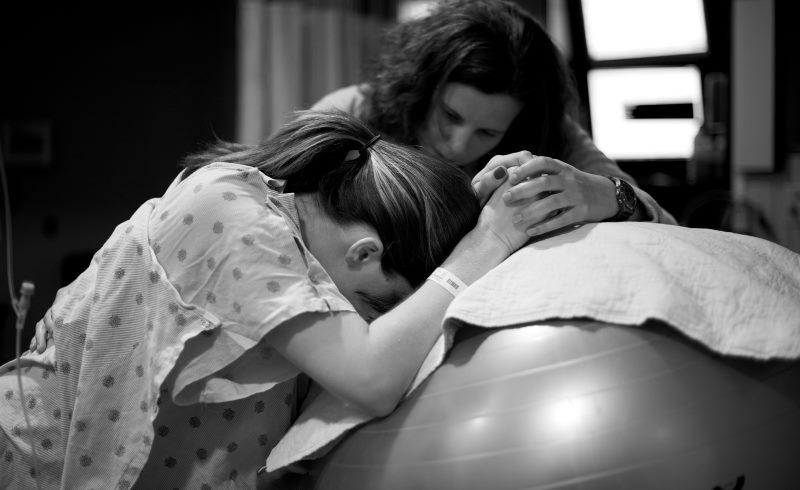
There are not a lot of things in life that could be more exciting than the birth of a new baby. This has been the case throughout human history. There has been a lot of advancement in childbirth options for new mothers to make their experience safer. There are a number of different techniques and options available that you can choose when trying to have your baby.
Trends of childbirth have changed a lot in the past couple of centuries. With the advances in technology and modern medical practices, childbirth has been made much safer for women. It is to be noted that in the early 1900s almost all childbirths in U.S. did not occur in a hospital. However, slowly by 1940, more than half of childbirths started taking place in hospitals. This trend of having a baby born in the hospital grew exponentially, and by late 1900s only 1% of births occurred outside a hospital.

It is suggested to have a well-executed birth plan in place. But everyone knew that however carefully planned and prepared one is for childbirth; there can be many twists and turns. In such cases, it’s important to be ready with alternative delivery plans or options.

In a vaginal birth, the baby is born through the birth canal. It’s hard to know when exactly one will go into labour. Most women give birth between 37-42 weeks of pregnancy. Almost all healthcare professionals recommend pregnant women to get prepared for a vaginal birth or natural birth unless there is a medical reason for a caesarian.
Benefits of vaginal birth or natural birth:

Everyone knows that not all births happen as planned. If complications arise, you have to look for alternate methods of delivery options.
A cesarean or C-section is the method of delivery a baby using a surgical incision in the mother’s lower abdomen and also the uterus. There are cases when a C-section is scheduled in advance when there are any known complications. But in other cases, it’s done when a sudden difficulty arises. Events that may require C-Section:
Most often, the need for a caesarean delivery is not known until after labor begins. Once a woman has had a caesarean delivery, future deliveries are often also done by caesarean. That’s because surgery done on the uterus increases the risk of it rupturing during a future vaginal delivery.
Earlier, if a woman had a C-section, all her future pregnancies had no chance of vaginal delivery. However today, with the advancement in technology and medical treatments, VBAC is possible for many deliveries. Now it is that women who try VBAC have nearly 75 percent successful vaginal delivery.
However, VBAC isn’t an option for everyone. Conditions such as pregnancy complications or underlying medical conditions can hinder the possibility of a successful VBAC. Many local hospitals don’t offer VBAC because they don’t have the staff or resources to handle emergency C-sections.

A vacuum extraction is a medical procedure done during vaginal childbirth. During this procedure, an experienced physician applies the vacuum in the form of a soft or rigid cup with a handle and a vacuum pump to the baby’s head to help guide the baby out of the birth canal.

A forceps delivery is a procedure that is sometimes done during vaginal delivery. During vaginal childbirth sometimes a need for this procedure arises. In a forceps delivery, the physician applies forceps, which is an instrument shaped like a pair of large spoons or tongs to the baby’s head and guide the baby out of the birth canal.

Another option that women often consider is the use of pain medication (such as an epidural) during labour and delivery. There are a lot of medications available such as systemic pain medication, spinal blocks, walking epidurals and more.

A water birth is considered as one of the gentlest ways to give birth. The woman labours and gives birth within a soothing water-filled tub. The warm water helps with comfort, relaxation, and pain management. Some women labour in the water and leave the tub for delivery while others actually give birth in the water.

Hypno-Birthing technique teaches women self-hypnosis, which puts them in a state of deep relaxation. This acts as a natural anesthesia at the time of delivery. In 1989 Marie Mongan developed this birth practice and so it is often referred to as the Mongan Method. This method uses deep relaxation and self-hypnosis techniques. It teaches pregnant women how to reach a peaceful state that helps keep the labour pain to a bare minimum.

A doula is derived from an ancient Greek word that means a woman who serves. Doulas are trained professionals who help pregnant women physically, emotionally and by means of education. They will be with the pregnant women during birth and also ensure that all involved parties adhere to the birth plan. They allow the mother’s partner to be involved in the birth according to his or her comfort level.

Home birth is the delivery that happens at home in the traditional way. This was how women across the globe gave birth for centuries before doctors and hospitals started handling deliveries. A midwife usually handles Home births. These midwives receive their education through experience rather than through nursing or medical school.
It is the most powerful creation to have life growing inside of you.There is no bigger gift